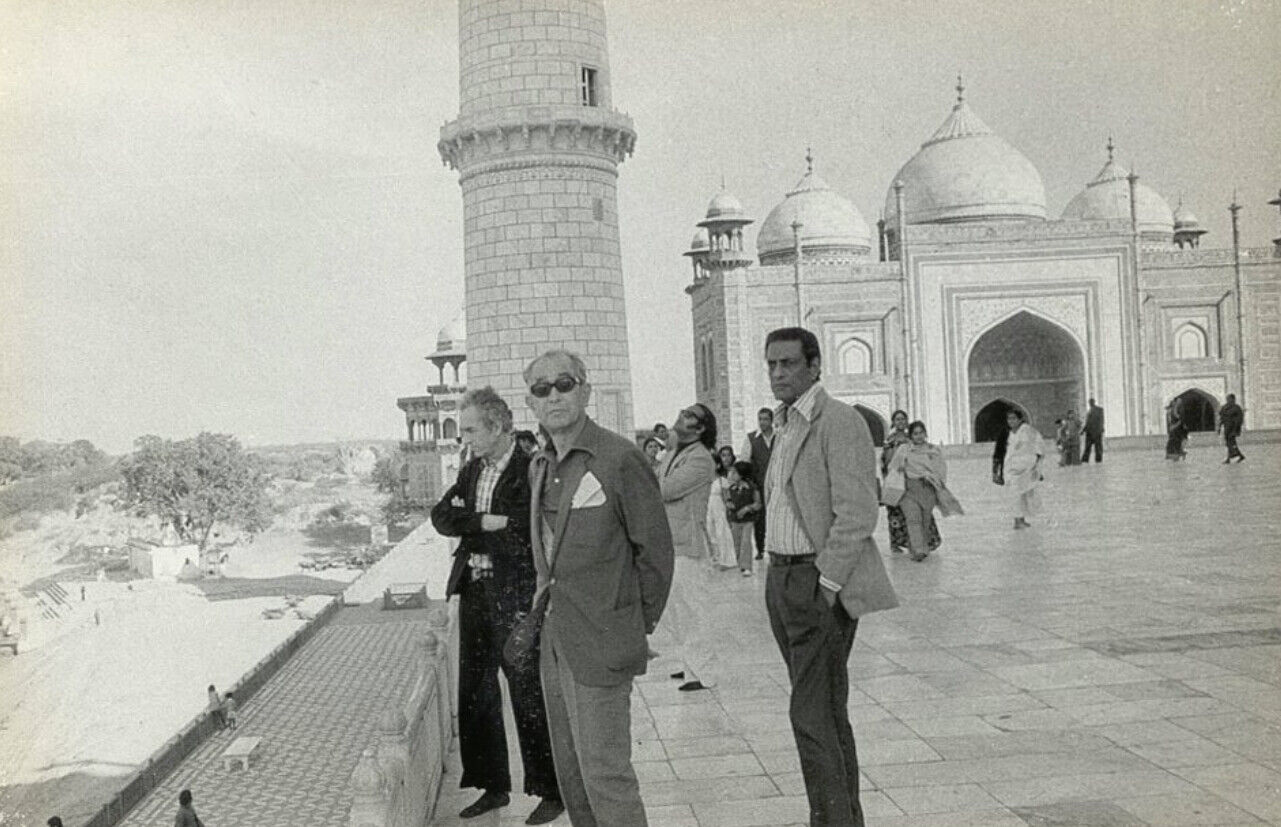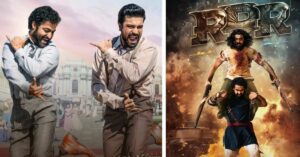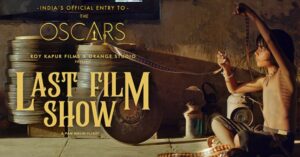Scorsese to Nolan: What 6 Legendary Filmmakers Said About The Inimitable Satyajit Ray
As Netflix prepares to launch 'Ray', a four-part series based on short stories written by Satyajit Ray adapted for the screen, we revisit what some legendary filmmakers across the globe had to say about his work.

Satyajit Ray’s cinema weaved together lyricism and realism like very few could. While many of his films are marked by stark realism, he never failed to capture the finer nuances of the human condition with incredible simplicity, beauty and excitement. (Image above of Akira Kurosawa and Satyajit Ray courtesy Facebook/Mubi)
He captured complicated experiences of people coming of age, daring to defy social expectations and thus moving their lives in a new direction with exquisite mastery. Nothing encapsulates this essence of Ray’s cinema better than The Apu Trilogy, a series of three films.
“While his long takes, deep focus and minimal camera movements feel worlds away from the mile-a-minute editing of modern Hollywood blockbusters, these allow Ray’s characters space and time to strike us as fully rounded human beings, not social representations or symbols. Even characters who should be condemned for their actions are allowed to engage us as people, and in Ray’s cinema, we catch an intimate glimpse of the many different kinds of lives lived in both colonial and modern India,” writes Sarah Jilani, a London-based film critic, for BFI.
In some ways, one could argue that this is the purest form of storytelling with characters who are not caught up in stereotypes or erased by a certain ideological mooring.
As Netflix prepares to launch ‘Ray’, a four-part series based on short stories written by Satyajit Ray adapted for the screen, on 25 June, it’s imperative to remind audiences who haven’t had the pleasure of watching his films about his standing in the history of world cinema.
In this listicle, we take you through what some of the most celebrated filmmakers have said about his body of work.

Akira Kurosawa, Film Director
The legendary Japanese filmmaker, who directed classics like Rashomon (1950), Seven Samurai (1954), Yojimbo (1961) and Ran (1985) and influenced countless filmmakers all over the world, once spoke about the deep-rooted humanism that existed in Ray’s films.
“The quiet but deep observation, understanding and love of the human race, which are characteristic of all his [Ray’s] films, have impressed me greatly…Not to have seen the cinema of Ray means existing in the world without seeing the sun or the moon.”
He described watching Ray’s most popular film, ‘Pather Panchali’ (1955), as “the kind of cinema that flows with the serenity and nobility of a big river,” in a conversation with British author Andrew Robinson for his his book ‘Satyajit Ray: The Inner Eye’, released in 1989.
“People are born, live out their lives, and then accept their deaths. Without the least effort and without any sudden jerks, Ray paints his picture, but its effect on the audience is to stir up deep passions. How does he achieve this? There is nothing irrelevant or haphazard in his cinematographic technique. In that lies the secret of its excellence,” he adds.

Martin Scorsese, Film Director
Martin Scorsese, who is widely regarded as one of the most influential directors in film history and has made classics such as Taxi Driver (1976) and Raging Bull (1980) once said, “Ray’s magic, the simple poetry of his images and their emotional impact, will always stay with me.”
“I was in high school and I happened to see ‘Pather Panchali’ ” — the first part of Ray’s coming-of-age trilogy in the 1950s about a boy from a Bengali village — “on television. Dubbed in English. With commercials. It didn’t matter. The image of the Indian culture we had had before, and I’m talking [when] I was 14 years old or 15 years old, was usually through colonialist eyes. When Satyajit Ray did his films, you suddenly understood not the culture, because the culture was so complex, but you became attached to the culture through the people,” he said, speaking to the Washington Post in 2002.
While nominating Ray for a Lifetime Achievement Oscar in 1991, he said, “I have admired his films for many years and for me he is the filmic voice of India, speaking for the people of all classes of the country…He is the most sensitive and eloquent artist and it can truly be said in his case that when we honor him we are honoring ourselves.”
James Ivory, Film Director and Producer
James Ivory, one half of the legendary Merchant Ivory Productions, alongside Indian-born producer Ismail Merchant, and husband of legendary screenwriter Ruth Prawer Jhabvala, had this to say about Ray’s work while nominating him for a Lifetime Achievement Oscar in 1991:
“Satyajit Ray is among the world’s greatest directors, living or dead…Isn’t it curious that the newest, the most modern of the arts, has found one of its deepest, most fluent expressions in the work of an artist like Ray, who must make his seamless films–many have been masterpieces–in a chaotic and volatile corner of one of the world’s oldest cultures, amidst the most stringent shortages of today’s advanced movie-making material and equipment?…It would be fitting to honour this great man, who has influenced so many other filmmakers…and to salute him with a Lifetime Award in the spring of 1992.”
Wes Anderson, Film Director
For his film ‘The Darjeeling Unlimited’, the American filmmaker and auteur took direct influences from Ray’s work. In fact, he claims Ray inspired him to come to India. In a 2007 interview, he said, “He is the reason I came here, but his films have also inspired all my other movies in different ways, and I feel I should dedicate the movie to him.”
Like many legendary filmmakers, Anderson is a student of Ray’s work. He was only 15 when he rented ‘Teen Kanya’ (Three Daughters) from a video store in Houston, Texas.
Besides The Apu Trilogy, if you want to understand which of Ray’s films to watch, Anderson offers a pretty exhaustive list: “His films (which were usually adapted by him from books) feel like novels to me. He draws you very close to his characters, and his stories are almost always about people going through a major internal transition. My favourites are the Calcutta trilogy of “The Adversary” (“Pratidwandi“), “Company Limited” (“Seemabaddha“), and “The Middleman” (“Jana Aranya“), which are very adventurous and inventive stylistically, and “Days and Nights in the Forest” (“Aranyer Din Ratri“), which I relate to the kind of movies and books that completely captured my attention when I was a teenager, with soulful troublemakers as heroes. I think “Charulata” (“The Lonely Wife“) is one of his most beautiful films, and also “Teen Kanya” (especially “The Postmaster”) and the Apu films.”
Francis Ford Coppola and Christopher Nolan, Film Directors
Coppola, the man behind the epic Godfather series, once said: “Whenever someone speaks from Kolkata, I remember Satyajit Ray’s call, praising me for ‘Godfather I’. He complimented me particularly for my discovery, Al Pacino, whom he considered the best actor of the 1970s. According to him, Marlon Brando was untouchable in ‘Godfather’. We know of Indian cinema through Ray’s works and, to me, his best is ‘Devi’, a cinematic milestone.”
Meanwhile, Nolan, the genius behind the Batman series, Inception and Interstellar, also spoke about his love for ‘Pather Panchali’, while shooting his film ‘Tenet’ in India. “I have had the pleasure of watching Ray’s Pather Panchali recently, which I hadn’t seen before. I think it is one of the best films ever made. It is an extraordinary piece of work. I am interested in learning more about Indian film industry and that is the reason why I came,” he said.
Beyond the Mainstream
Ray’s influence on filmmakers, however, goes beyond the mainstream. Speaking to The Better India, Rima Das, an independent filmmaker from Assam whose movie Village Rockstars became India’s official entry to the Oscars in 2018, said in a May 2020 interview:
“When I watched Satyajit Ray’s Pather Panchali in 2007, it made me believe that this is how you can also make movies. Growing up, making films didn’t feel like a realistic objective since I had known commercial cinema to be too big and expensive with massive budgets. I never thought I would make movies and that it wasn’t a realistic dream for me.”
She says watching a classic like ‘Pather Panchali’ opened up her eyes to making films centered on her village, people and local traditions. In fact, like in ‘Pather Panchali’, where Ray used ‘non-professional actors’, Rima also employed local, untrained and non-professional actors for some of her most successful films.
Thanks to Ray, filmmakers like Rima with genuine craft and imagination from largely forgotten parts of India like rural Assam have been able to take their movies rooted in their local social milieu to a global audience. Rima’s work has also received genuine appreciation from people rooted in vastly different cultures and sensibilities.
After all, it’s impossible to deny the magic of quality cinema, whatever the language and location.
(Edited by Divya Sethu)
Like this story? Or have something to share? Write to us: [email protected], or connect with us on Facebook and Twitter.
This story made me
-
97
-
121
-
89
-
167
Tell Us More
We bring stories straight from the heart of India, to inspire millions and create a wave of impact. Our positive movement is growing bigger everyday, and we would love for you to join it.
Please contribute whatever you can, every little penny helps our team in bringing you more stories that support dreams and spread hope.



















